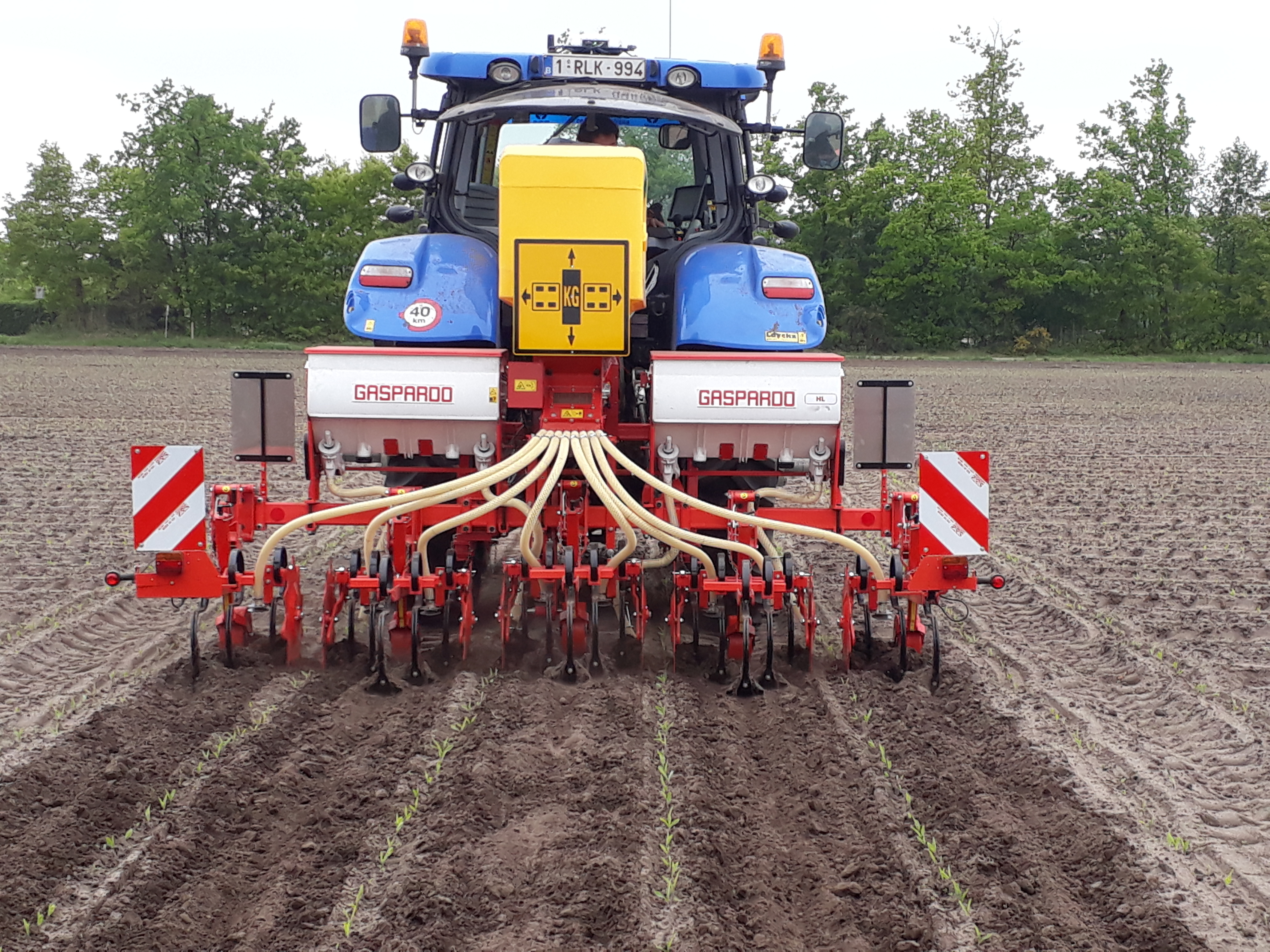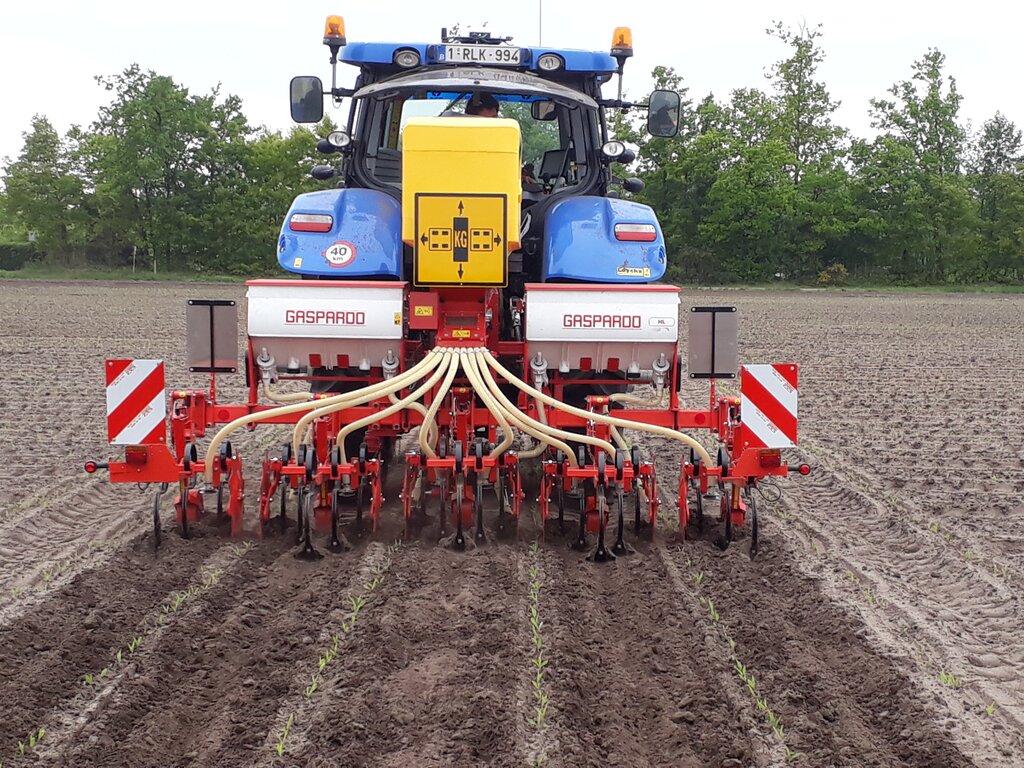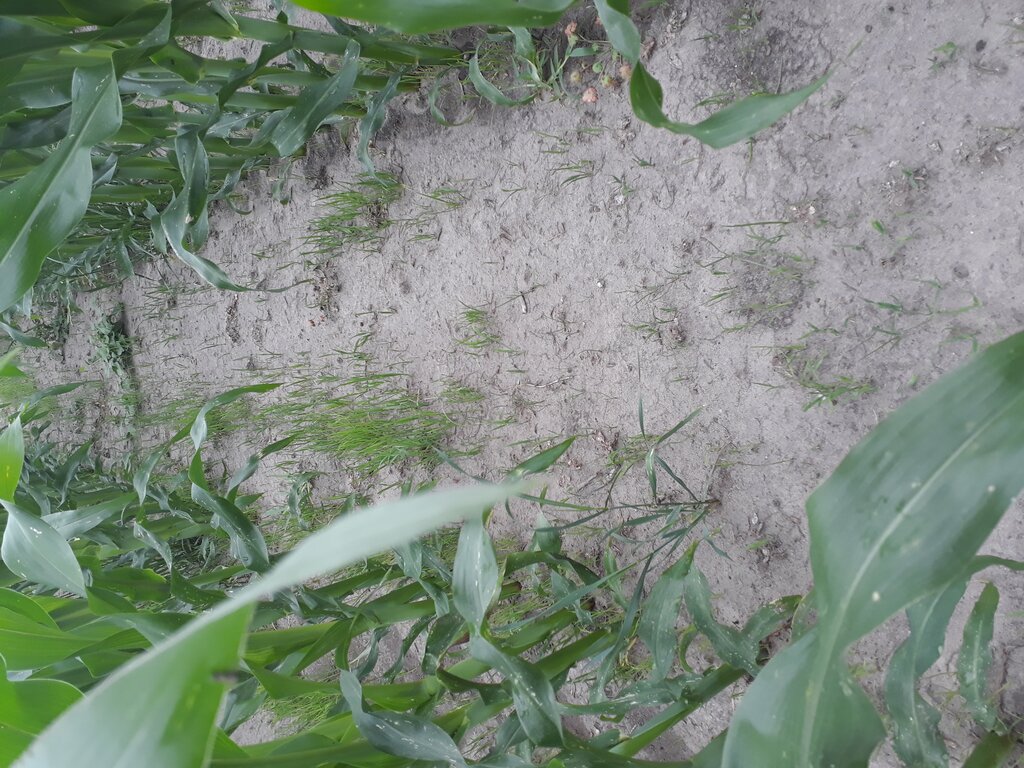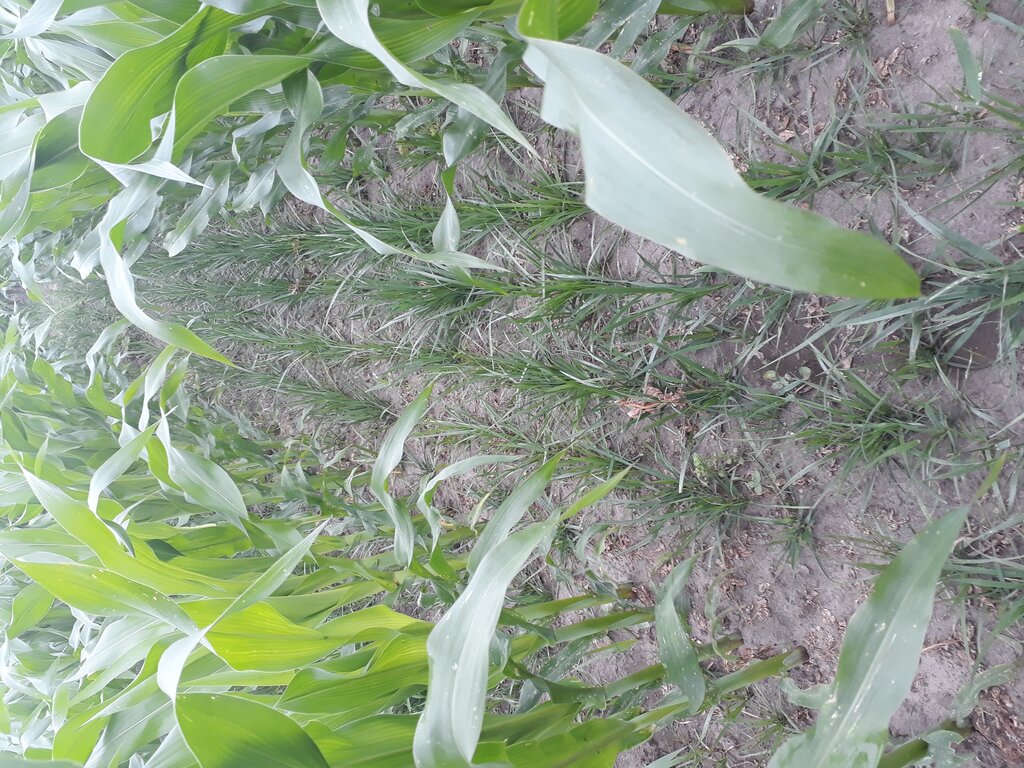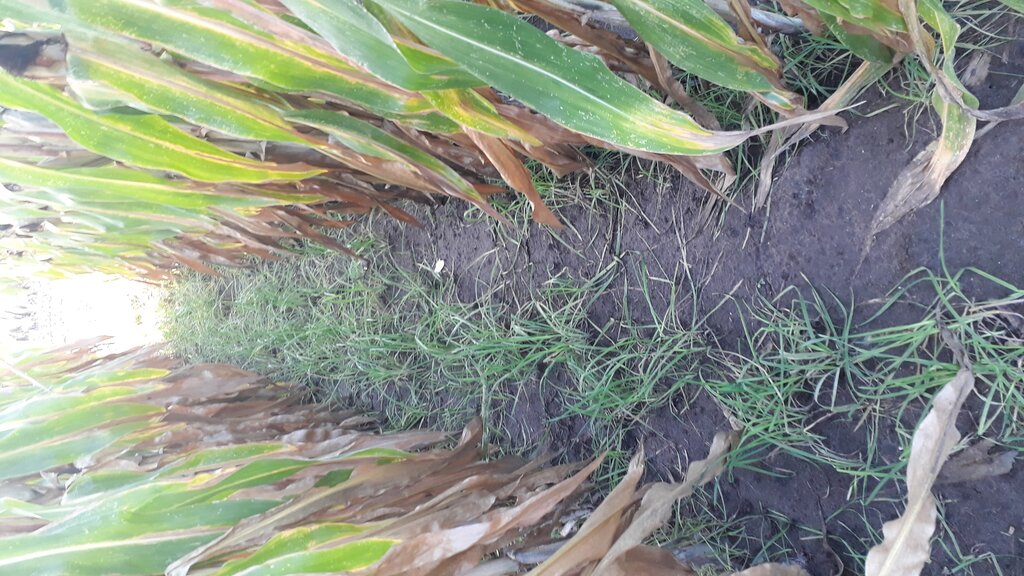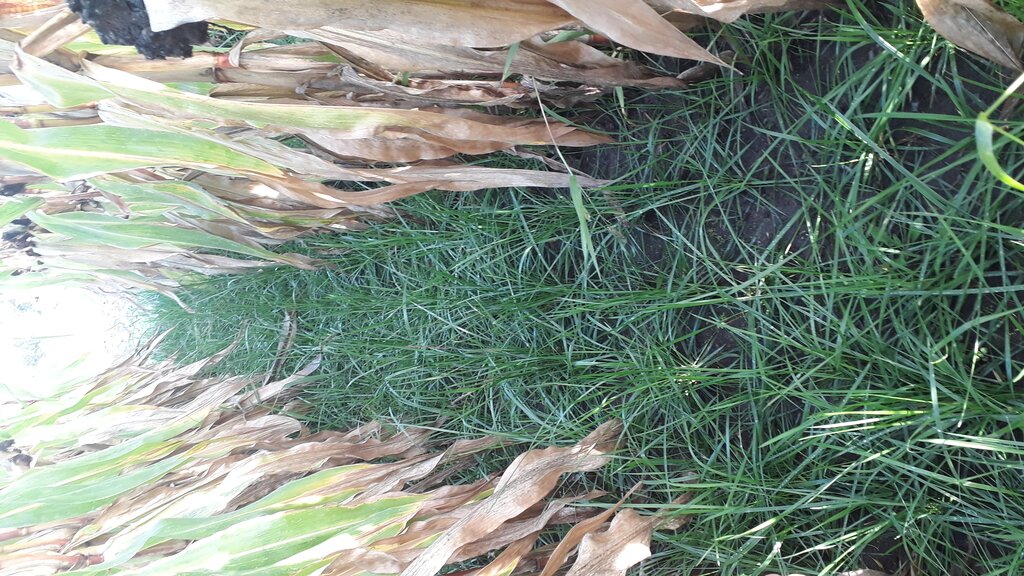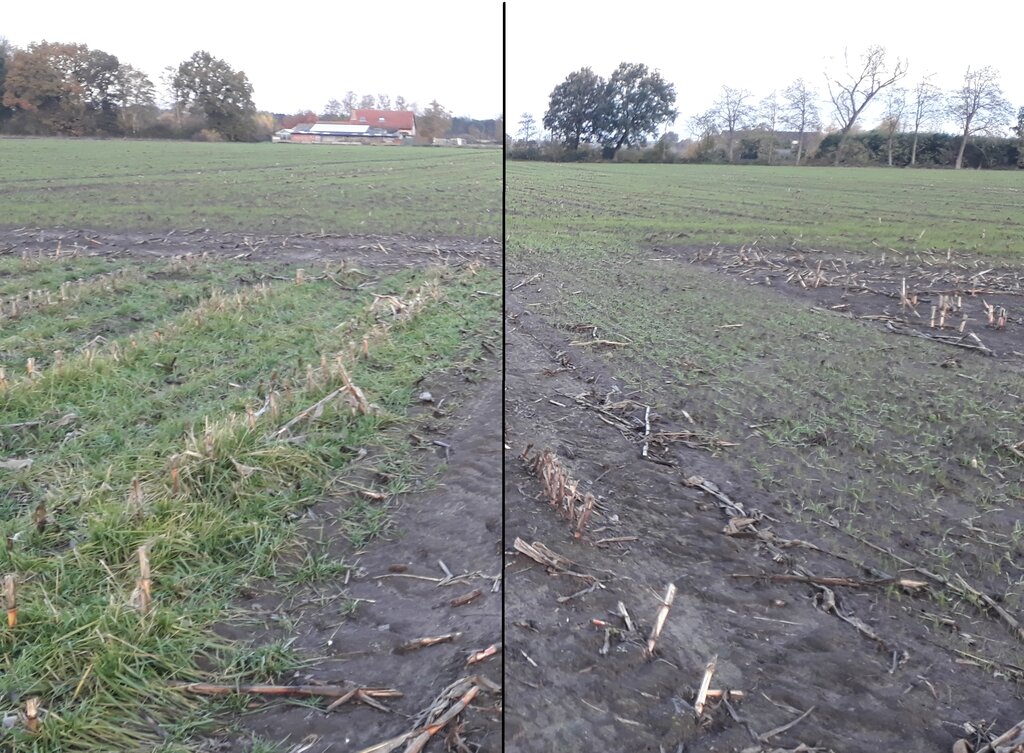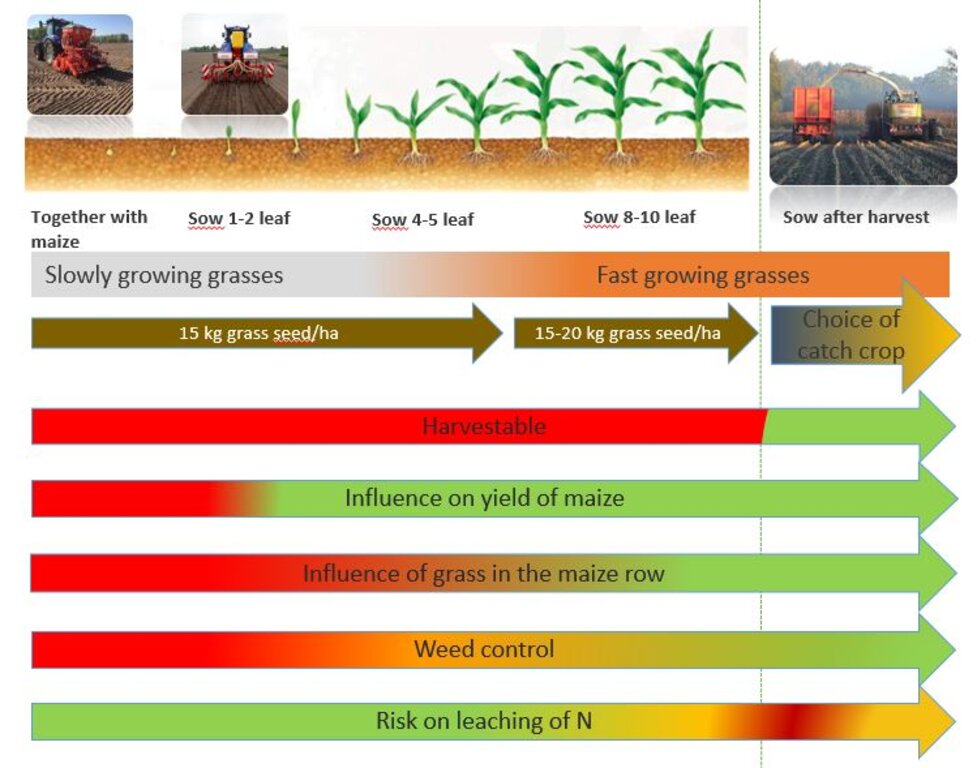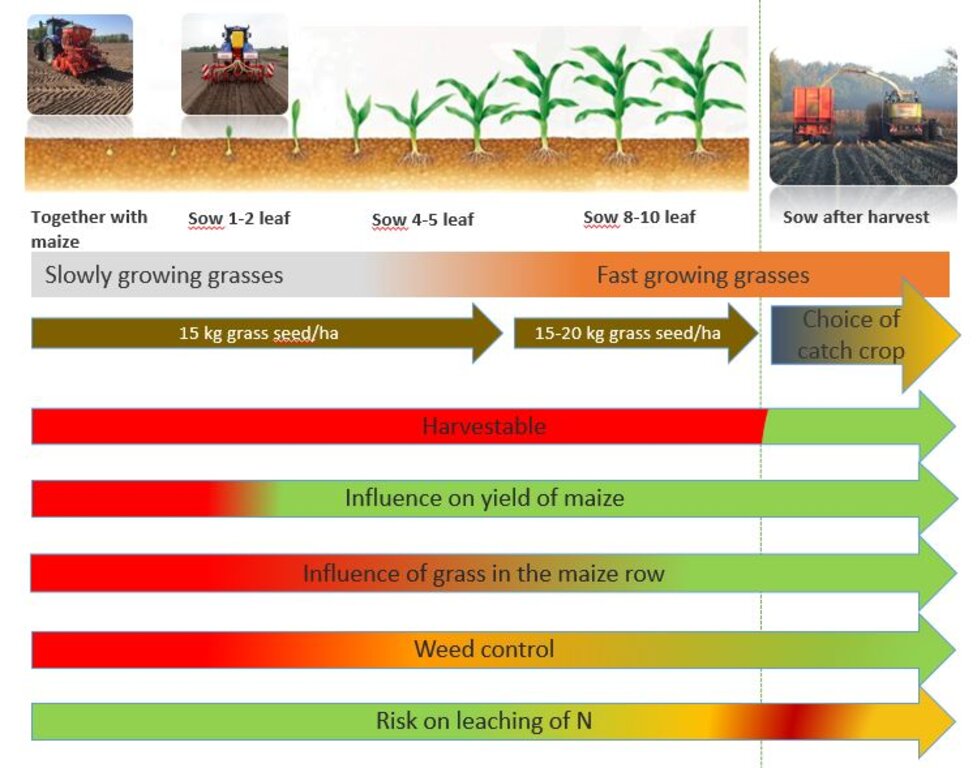Undersowing grass in maize as a cover crop [Belgium]
- Creation:
- Update:
- Compiler: Alan Radbourne
- Editor: –
- Reviewers: William Critchley, Rima Mekdaschi Studer
Onderzaai/gelijktijdige zaai van gras in mais
technologies_6876 - Belgium
View sections
Expand all Collapse all1. General information
1.2 Contact details of resource persons and institutions involved in the assessment and documentation of the Technology
Key resource person(s)
SLM specialist:
Van de Ven Gert
Hooibeekhoeve
Belgium
Name of project which facilitated the documentation/ evaluation of the Technology (if relevant)
European Interreg project FABulous Farmers1.3 Conditions regarding the use of data documented through WOCAT
The compiler and key resource person(s) accept the conditions regarding the use of data documented through WOCAT:
Yes
1.4 Declaration on sustainability of the described Technology
Is the Technology described here problematic with regard to land degradation, so that it cannot be declared a sustainable land management technology?
No
2. Description of the SLM Technology
2.1 Short description of the Technology
Definition of the Technology:
Undersowing of grass into maize helps prevent leaching of nitrogen in sandy soils, and keeps the soil surface covered year-round. However, the time of sowing, choice of grass variety and seeding rate are all crucial to its success.
2.2 Detailed description of the Technology
Description:
Hooibeekhoeve (a farm education and research facility) started to experiment with undersowing in 2015. The aim was to have a well-developed catch crop/cover crop in the field during autumn and winter that could prevent nitrogen leaching. Initially, the grass was sown together with the maize, or when the maize reached the 8-10 leaf stage. But both techniques have their weaknesses and a better alternative proved to be undersowing the grass at the 4-6 leaf stage. This has been the practice since 2019, and gives the best of both worlds.
Considerations regarding time of undersowing include the following:
•Sowing at the 8-10 leaf stage is often confronted with adverse the field/weather conditions which are almost never optimal.
•Sowing together increases competition between grass and maize, and therefore lower yields of maize: however, the earlier you sow the grass, the better the effect on prevention of nitrogen leaching.
•Timing of sowing has an influence on the choice of grass and the amount of seed required:
- Early stage (simultaneous sowing and at the 1-2 leaf stage): tall fescue (Festuca arundinacea) develops and grows slowly and therefore leads to less competition with the maize: 15 kg/ha of seed is required.
- When sowing at the 4-6 leaf stage, a combination of perennial ryegrass (Lolium perenne) and cocksfoot (Dactylis glomerata) is the preferred grass mixture: again, sown at 15 kg/ha. The effect on maize yield is even positive when sowing at this stage - possibly due to the mechanical weed control, which stimulates mineralisation.
- Sowing at the 8-10 leaf stage: Italian ryegrass (Lolium multiflorum) is used at 20 kg/ha. This has the vigour to grow under the maize when maize is already tall enough tolerate this dominating grass.
The grass must be sown between, and not within the maize rows. A motorised hoe with seed box is used. This machine weeds between the rows of the maize and at the same time sows the grass. RTK-GPS tracking is needed to do this correctly.
Weed control is not an easy job in this system, and the earlier you sow the grass, the more difficult is the problem. Because there are two different crops in the field at the same time, you have to keep both in consideration when selecting plant protection products. Therefore, it is not recommended to use this technique in fields with high weed pressure, especially not where there are grassy weeds.
After the harvest, the cover crop – grass – has already formed a dense carpet. This gives protection to the soil during harvest and no further soil tillage is needed, or desirable in the autumn. The grass can then be ploughed in or killed with a herbicide in the early-spring ready for a new crop.
This undersowing technique demonstrates a decrease of N residue compared to ‘no catch/ cover crop’ and ‘sowing of catch/ cover crop after harvest’ every year and at every location. This is a positive finding. However, farmers find it hard to implement, due to the possible negative effect on the yield of the maize and difficulties with weed control.
2.3 Photos of the Technology
2.5 Country/ region/ locations where the Technology has been applied and which are covered by this assessment
Country:
Belgium
Region/ State/ Province:
Antwerpen
Specify the spread of the Technology:
- evenly spread over an area
If precise area is not known, indicate approximate area covered:
- 0.1-1 km2
Is/are the technology site(s) located in a permanently protected area?
No
Map
×2.6 Date of implementation
Indicate year of implementation:
2015
2.7 Introduction of the Technology
Specify how the Technology was introduced:
- during experiments/ research
3. Classification of the SLM Technology
3.1 Main purpose(s) of the Technology
- reduce, prevent, restore land degradation
3.2 Current land use type(s) where the Technology is applied
Land use mixed within the same land unit:
No

Cropland
- Annual cropping
Number of growing seasons per year:
- 1
Is intercropping practiced?
Yes
If yes, specify which crops are intercropped:
Maize is harvested, grass is not.
Is crop rotation practiced?
No
3.3 Has land use changed due to the implementation of the Technology?
Has land use changed due to the implementation of the Technology?
- No (Continue with question 3.4)
3.4 Water supply
Water supply for the land on which the Technology is applied:
- rainfed
3.5 SLM group to which the Technology belongs
- improved ground/ vegetation cover
- integrated soil fertility management
3.6 SLM measures comprising the Technology

agronomic measures
- A1: Vegetation/ soil cover
3.7 Main types of land degradation addressed by the Technology

chemical soil deterioration
- Cn: fertility decline and reduced organic matter content (not caused by erosion)
3.8 Prevention, reduction, or restoration of land degradation
Specify the goal of the Technology with regard to land degradation:
- prevent land degradation
4. Technical specifications, implementation activities, inputs, and costs
4.1 Technical drawing of the Technology
Technical specifications (related to technical drawing):
The choice of the grass and the amount of seed is different at the various possible several stages of undersowing:
-Early stage (together and maize at the 1-2 leaf stage): tall fescue (Festuca arundinacea) was used. This grass develops and grows slowly and therefor only little competition with the maize: seeding rate = 15 kg/ha.
-4-6 leaf: a combination of English ryegrass (Lolium perenne) and cock’s foot (Dactylis glomerata) was used at 15 kg/ha.
-8-10 leaf: Italian ryegrass (Lolium multiflorum): 20 kg/ha is used. This type of grass still has the vigour to grow under the maize and the maize is already tall enough to deal with this dominating grass.
Dimensions: 75 cm between each row of maize. In between the maize are 5 rows of grass. Between the maize row and the grass is a bare soil of 12.5 cm at each side of the maize row.
In case of 4-6 or 8-10 leaf, the sowing can be combined with mechanical weed control.
Author:
Gert Van de Ven
Date:
01/07/2021
4.2 General information regarding the calculation of inputs and costs
Specify how costs and inputs were calculated:
- per Technology area
Indicate size and area unit:
ha
other/ national currency (specify):
Euro
If relevant, indicate exchange rate from USD to local currency (e.g. 1 USD = 79.9 Brazilian Real): 1 USD =:
0.91
4.5 Maintenance/ recurrent activities
| Activity | Timing/ frequency | |
|---|---|---|
| 1. | Mechanical weed control, combined with seeding of the cover crop | Dependent on the time of undersowing: together with maize, in 1-2 leaf stage, in 4-6 leaf stage or in 10-12 leaf stage (see above) |
4.6 Costs and inputs needed for maintenance/ recurrent activities (per year)
| Specify input | Unit | Quantity | Costs per Unit | Total costs per input | % of costs borne by land users | |
|---|---|---|---|---|---|---|
| Labour | Chemical weed control (product & labour) | ha | 1.0 | 70.0 | 70.0 | 100.0 |
| Equipment | Hoeing combined with sowing cover crop | euro/ha | 1.0 | 70.0 | 70.0 | 100.0 |
| Plant material | Seed cover crop | euro/kg | 15.0 | 25.0 | 375.0 | 100.0 |
| Total costs for maintenance of the Technology | 515.0 | |||||
| Total costs for maintenance of the Technology in USD | 565.93 | |||||
4.7 Most important factors affecting the costs
Describe the most determinate factors affecting the costs:
The way of sowing, the seed and the use of plant protection products
5. Natural and human environment
5.1 Climate
Annual rainfall
- < 250 mm
- 251-500 mm
- 501-750 mm
- 751-1,000 mm
- 1,001-1,500 mm
- 1,501-2,000 mm
- 2,001-3,000 mm
- 3,001-4,000 mm
- > 4,000 mm
Agro-climatic zone
- sub-humid
5.2 Topography
Slopes on average:
- flat (0-2%)
- gentle (3-5%)
- moderate (6-10%)
- rolling (11-15%)
- hilly (16-30%)
- steep (31-60%)
- very steep (>60%)
Landforms:
- plateau/plains
- ridges
- mountain slopes
- hill slopes
- footslopes
- valley floors
Altitudinal zone:
- 0-100 m a.s.l.
- 101-500 m a.s.l.
- 501-1,000 m a.s.l.
- 1,001-1,500 m a.s.l.
- 1,501-2,000 m a.s.l.
- 2,001-2,500 m a.s.l.
- 2,501-3,000 m a.s.l.
- 3,001-4,000 m a.s.l.
- > 4,000 m a.s.l.
Indicate if the Technology is specifically applied in:
- not relevant
5.3 Soils
Soil depth on average:
- very shallow (0-20 cm)
- shallow (21-50 cm)
- moderately deep (51-80 cm)
- deep (81-120 cm)
- very deep (> 120 cm)
Soil texture (topsoil):
- coarse/ light (sandy)
Soil texture (> 20 cm below surface):
- coarse/ light (sandy)
Topsoil organic matter:
- medium (1-3%)
5.4 Water availability and quality
Ground water table:
< 5 m
Availability of surface water:
good
Water quality (untreated):
poor drinking water (treatment required)
Is water salinity a problem?
No
Is flooding of the area occurring?
No
5.5 Biodiversity
Species diversity:
- medium
Habitat diversity:
- high
Comments and further specifications on biodiversity:
Hooibeekhoeve has a variety of habitat and biodiversity approaches being used and tested on the farm providing an excellent place for resilient farming and wildlife.
5.6 Characteristics of land users applying the Technology
Sedentary or nomadic:
- Sedentary
Market orientation of production system:
- subsistence (self-supply)
Relative level of wealth:
- average
Individuals or groups:
- employee (company, government)
Level of mechanization:
- mechanized/ motorized
Gender:
- men
Age of land users:
- middle-aged
5.7 Average area of land used by land users applying the Technology
- < 0.5 ha
- 0.5-1 ha
- 1-2 ha
- 2-5 ha
- 5-15 ha
- 15-50 ha
- 50-100 ha
- 100-500 ha
- 500-1,000 ha
- 1,000-10,000 ha
- > 10,000 ha
Is this considered small-, medium- or large-scale (referring to local context)?
- medium-scale
5.8 Land ownership, land use rights, and water use rights
Land ownership:
- state
Land use rights:
- individual
Water use rights:
- individual
Are land use rights based on a traditional legal system?
Yes
5.9 Access to services and infrastructure
health:
- poor
- moderate
- good
education:
- poor
- moderate
- good
technical assistance:
- poor
- moderate
- good
employment (e.g. off-farm):
- poor
- moderate
- good
markets:
- poor
- moderate
- good
energy:
- poor
- moderate
- good
roads and transport:
- poor
- moderate
- good
drinking water and sanitation:
- poor
- moderate
- good
financial services:
- poor
- moderate
- good
6. Impacts and concluding statements
6.1 On-site impacts the Technology has shown
Socio-economic impacts
Production
fodder production
Comments/ specify:
Depends on the time of undersowing (+ in 4-leafstage)
fodder quality
product diversity
land management
Comments/ specify:
More difficult in use of plant protection products (2 crops at same time in field)
Income and costs
workload
Ecological impacts
Water cycle/ runoff
water quality
Comments/ specify:
Less leaching of N and other nutrients
Soil
soil cover
nutrient cycling/ recharge
Biodiversity: vegetation, animals
Vegetation cover
biomass/ above ground C
Comments/ specify:
Since the cover crop can develop in better conditions, the generated biomass of the cover crop is higher compared to sowing after harvest of maize
plant diversity
Climate and disaster risk reduction
flood impacts
Comments/ specify:
Due to higher C-content, the soils sponginess is better. Therefore water infiltration is better and it is longer available for the crop.
drought impacts
Comments/ specify:
Due to higher C-content, the soils sponginess is better. Therefor the water infiltration is better and it is longer available for the crop
Specify assessment of on-site impacts (measurements):
Based on expert assessment of impacts witnessed and expected outcomes.
6.2 Off-site impacts the Technology has shown
groundwater/ river pollution
Comments/ specify:
Less leaching of N and other elements
buffering/ filtering capacity
Comments/ specify:
Less leaching of N and other nutrients
Specify assessment of off-site impacts (measurements):
Based on expert assessment of impacts witnessed and expected outcomes.
6.3 Exposure and sensitivity of the Technology to gradual climate change and climate-related extremes/ disasters (as perceived by land users)
Gradual climate change
Gradual climate change
| Season | increase or decrease | How does the Technology cope with it? | |
|---|---|---|---|
| annual temperature | increase | well |
6.4 Cost-benefit analysis
How do the benefits compare with the maintenance/ recurrent costs (from land users' perspective)?
Short-term returns:
neutral/ balanced
Long-term returns:
slightly positive
Comments:
Recurrent costs (has to be done every year).
6.5 Adoption of the Technology
- 1-10%
Of all those who have adopted the Technology, how many did so spontaneously, i.e. without receiving any material incentives/ payments?
- 91-100%
6.6 Adaptation
Has the Technology been modified recently to adapt to changing conditions?
No
6.7 Strengths/ advantages/ opportunities of the Technology
| Strengths/ advantages/ opportunities in the land user’s view |
|---|
| More resilient to climate change |
| More resilient to plagues and diseases |
| Increase of the percentage C in the soil |
| Increased yield and income |
| Strengths/ advantages/ opportunities in the compiler’s or other key resource person’s view |
|---|
| Increase of the percentage C in the soil |
| Food security |
6.8 Weaknesses/ disadvantages/ risks of the Technology and ways of overcoming them
| Weaknesses/ disadvantages/ risks in the land user’s view | How can they be overcome? |
|---|---|
| Feed value of the ‘new’ crops | Analysis of the crops in standardized tables |
| More cultivation exercise necessary | Demonstrations / network sessions / literature |
| investment costs (other machinery) | NA |
7. References and links
7.1 Methods/ sources of information
- field visits, field surveys
Technique was tested in trials and fine tuned. During demonstration visits, the technique was shown to other farmers.
- interviews with land users
Technique was developed together with other researchers on fodder crops in Flanders.
When were the data compiled (in the field)?
01/07/2021
Comments:
Compiled between 2016-2021
7.3 Links to relevant online information
Title/ description:
Article on use of cover crops in/after maize
URL:
1)http://www.lcvvzw.be/wp-content/uploads/2020/03/A2020_3-Vanggewassen-in-ma%C3%AFs-is-onderzaai-een-optie.pdf
Title/ description:
Article on use of cover crops in/after maize (2022)
URL:
2)https://www.lcvvzw.be/wp-content/uploads/2022/07/B2022_1-Brochure-Functionele-leidraad-groenbedekkers-bij-mais.pdf
Title/ description:
Article on this technique in grain maize
URL:
3)https://www.lcvvzw.be/wp-content/uploads/2022/04/A2022_13-Groenbedekkers-bij-korrelmais.pdf
Title/ description:
Article on undersowing after grassland tearing
URL:
4)https://www.lcvvzw.be/wp-content/uploads/2022/04/A2022_12-gelijk-en-onderzaai-bij-mais-na-gescheurd-grasland.pdf
Links and modules
Expand all Collapse allLinks
No links
Modules
No modules


